The Gambia: An Unforgettable and Amazing Country
US cruisers, Jill and Michael Gallin, are taking the ‘road less travelled’ and when visiting The Gambia in West Africa, found a cruising destination that made an indelible mark on their hearts.
Published 1 year ago
Three and a half years into our sailing voyage, I think about The Gambia more than any other place we have visited. This small river country has made an indelible mark on my heart.
Situated in West Africa and surrounded by Senegal, The River Gambia winds its way inland from the Atlantic, 700 NM east, past countless mangrove-banked bolongs to remote villages.
It’s not unusual to see dolphins, crocodiles, hippopotami, chimpanzees, and other monkeys from the deck, and all you have to do is look up to see an eagle-owl or violet turaco in this world-renowned birding destination.
The Gambians of The Smiling Coast welcome foreigners with open arms and ask only that you pay with your heart.
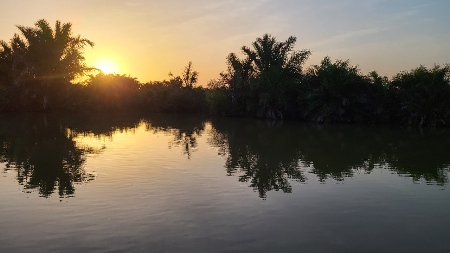

Why go?
The sandy streets, wildlife, and ethnic (Mandinka, Wolof, Fula, Jola, Serer, Serahuli, Amanjago, Aku) people of The Gambia made us feel like virgin voyagers to this country throughout our journey. Invitations to join men in their homes for hot meals were not unusual, and women were keen to encourage us to join them in dance circles to show appreciation for our visit. These gestures, along with the colorful dress, the beat of the tam-tam drums in the distance, and an environment like no other, wholly captivated us.
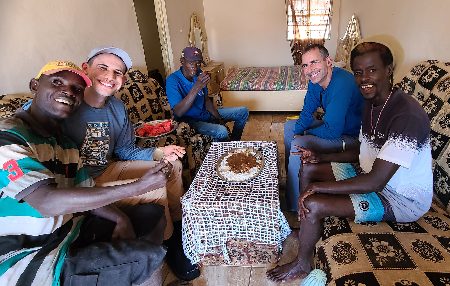

Above all else, The Gambia is a place to learn. For those who will be crossing the Atlantic, like we did, experiencing the history of the trans-Atlantic slave trade from West Africa to the Caribbean on-site gives an unparalleled perspective. Ask about anything else you’re interested in and a local will educate you. We took a cooking class in Mandinari, an eco-tour in Bintang Bolong, visited schools in Lamin, Tendaba, and Bombally, and toured hospitals in Lamin and Albadarr. There is little red tape, and The Gambians seemed genuinely happy to share their way of life with us.
How to get there
The Canary Islands are good jumping-off points for The Gambia, and it’s best to go during the dry season, November to May. We visited for three weeks. Fully provisioned, we departed from El Hierro [27° 47.13’’N, 17° 54.10’W] in early December for the 920 NM passage to Banjul [13° 26.57N, 16° 34.85’W].
Arriving at night, we drifted outside the harbor until sunrise. We stayed on close watch to avoid local fisherman, who made their presence known with spotlights and gregarious welcome shouts to our American boat.
Once anchored in Banjul, we donned the required fluorescent safety vests and dinghied to the bustling industrial dock, where we met our pre-arranged agent. The check-in process was hot, complicated, and incredibly interesting.
Clearing in
The clearance section on Noonsite is as accurate as it can be regarding the somewhat fluid process of clearing into The Gambia. Cruisers should arrive with some flexibility in their expectations regarding cost and efficiency. For us, the price of our agent, Muhammed Keita (WhatsApp +220-753-4064), was well worth it. Not because the bureaucracy was burdensome per se, but because navigating the location of the different offices we needed to visit felt like a quest to find a hidden treasure!
Signage was minimal, if present, and there was no rhyme or reason to us about where things were situated. Mr. Keita eased our way for a total cost of 60€, including fees for clearing in and out, transportation to purchase a Gambian courtesy flag, SIM cards, ATM/exchange should you need them, and a visit to Mr. Ketia’s favorite restaurant. In addition, we paid a 22€ river permit fee and a 100€ pp Customs & Immigration charge. (Note: There is no Customs & Immigration charge for citizens from England, France, Germany, Holland and Sweden).
Our Route Up and Down The River Gambia
Lamin Lodge is where most cruisers begin their Gambian voyage. It’s a calm anchorage where locals paddle to yachts on dug-out canoes and act as informal hosts to foreigners. Morning Tapalapa (traditional baked bread) delivery is one of the many services they will provide for a nominal, heart-determined cost.
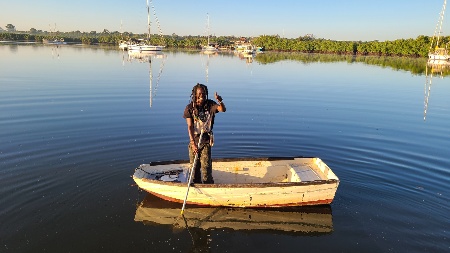

A precarious dinghy dock leads to the lodge, where you can sit for a drink while watching green monkeys scurry about in the trees. A robust walk along sandy streets will take you through a residential area to a commercial district. We supplemented our food supply at the roadside market, where bananas, peppers, cabbage, tomatoes, and dried goods were available. Luckily, watermelon (USD 1.00-2.00 per large melon) was in season, too!
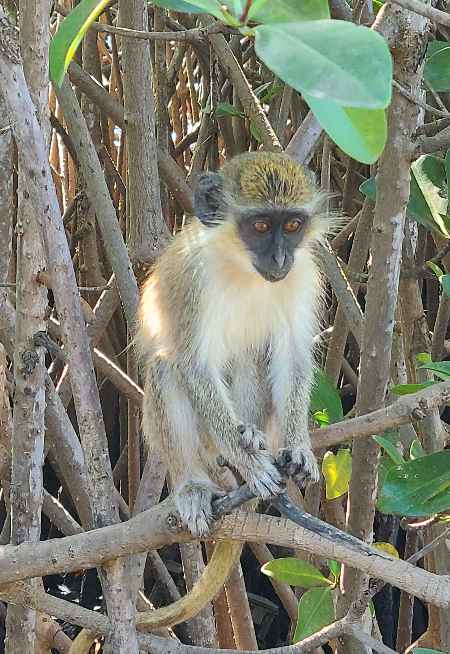
Albadarr
Our next stop was Albadarr, the birthplace of Kunta Kinte, the main character in Alex Haley’s book Roots. Here, a local guide told us about the history of the transatlantic slave trade, and there was an excellent museum following his presentation.
Tendaba
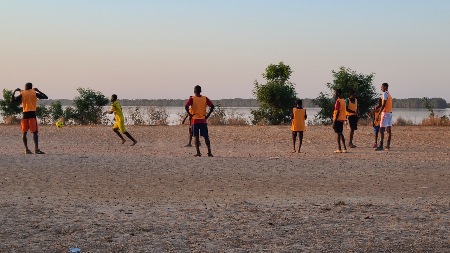

Continuing upriver, we stopped at Tendaba, where a local guide and a handful of children welcomed us at the dinghy dock. There was a paved road just outside town; we found it a great place to stretch our legs.
The Senegambia Bridge
Seventy miles upriver, the Senegambia Bridge is of little concern to boats under 18 meters (59 feet) clear height, but at 19.3 meters (63 feet and 4 inches), the bridge was our most challenging milestone. We meticulously analyzed bridge clearance measurements, photos of the water level taken by previous cruisers, and Gambian tide tables.
The Captain had decided it was best to get a birds-eye view of the bridge’s underside from the top of the mast. At the same time, one crew member would remain at the helm while a third would raise the anchor and photograph the water level datum for our return. We purchased Senna headsets to communicate during this event. On the big day, the captain would alert the crew from his perch if we weren’t going to clear the bridge, and we would abort our mission with the assistance of the strong outgoing current. It would be an understatement to say this was a nail-biting experience, but we made it under the bridge at low tide with 0.77m (30.31in) to spare.
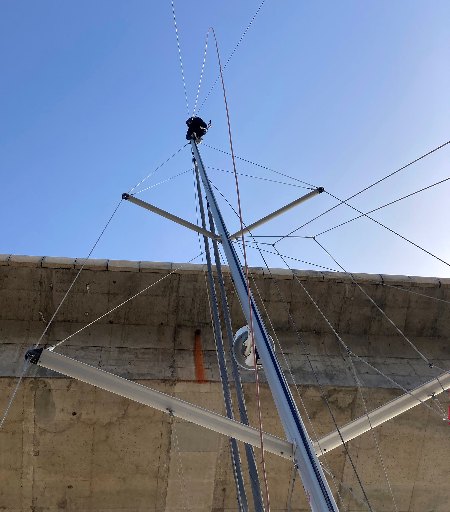

Farafenni
Just east of Senegambia Bridge, we walked 6.5 Kilometers through the bush and past several residential neighborhoods to Farafenni, a village on the North side of the river. This miniature metropolis had a vibrant market with stalls selling everything from furniture to auto parts to clothing. Women dressed in colorful prints sold fresh fruits and vegetables alongside the stalls. So, we restocked our perishable provisions (peppers, coconut, eggplant, tomatoes, onions, cabbage, and watermelon) in Farafenni. Note that many locals were riding donkey-drawn carts to the market. Therefore, carts or taxis were likely options if you preferred to avoid walking.
Bombally
Bombally and Kuntaur were our favorite stops along our Gambian voyage. Having pre-planned a visit to the local school in Bombally, the people there expected us and gave us an enthusiastic welcome.
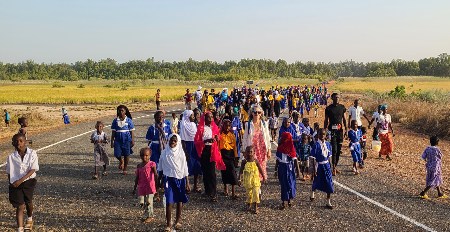

We participated in a jubilant riverside dance circle before joining a procession into the town, where we were introduced to the village Iman and Chief.
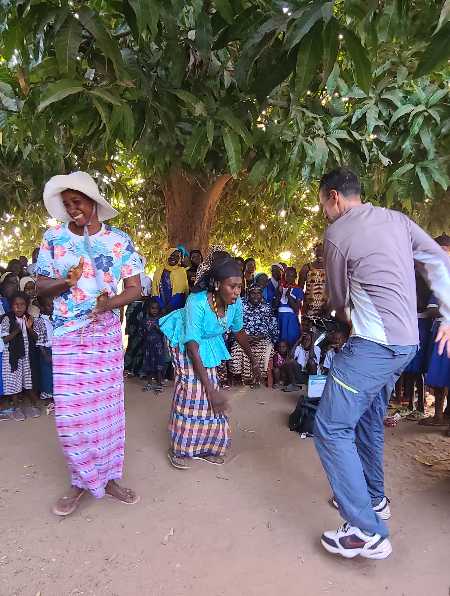
Kuntaur
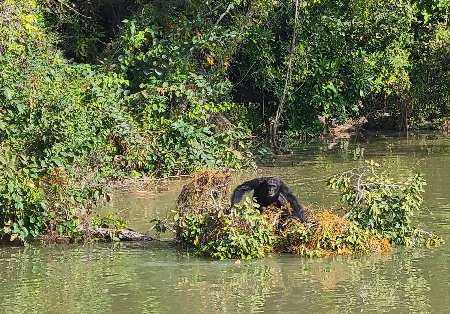
Finally, in Kuntaur, where the mangroves give way to the jungle, we slow-motored through The River Gambia National Park. Chimpanzees, red colobus, green monkeys, and baboons came out in droves during the day, while hippos roared and honked throughout the night. It was everything I had imagined the African wilderness would be and more.
Back down the River
Of course, what goes up the river must come down. So we worked our way from Janjanbureh back to Banjul, stopping at different anchorages on our return trip. Bintang Bolong, a village frequented by land-based tourists, was a good New Year’s Eve dinner stop. The lodge there hosted locals and foreigners alike for a buffet. Also, there was a fish market, laundry service availability, and eco-tour opportunities there. We took advantage of all this village had to offer.
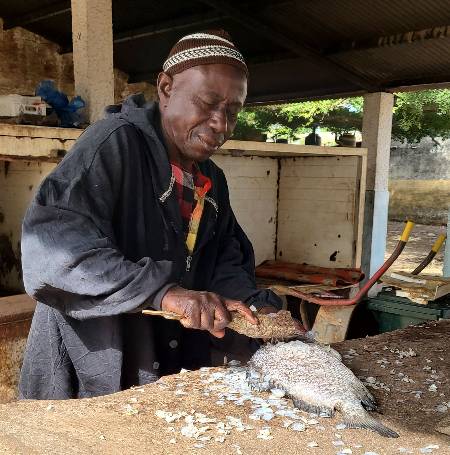

Practicalities:
1. Pre-Arrival Planning
Before our arrival, we did our research. Navionics, Noonsite, Navily, and No Foreign Land were invaluable resources. In addition, we read blogs and contacted cruisers who had previously been to The Gambia. Our agent, Muhammed Keita (Whatsapp: +220 753 4064), was helpful from afar, as were the Ocean Cruising Club [OCC] port captains in The Canaries and The Gambia.
We acquired the necessary vaccinations (yellow fever documentation is required to check into the country) and medications to prevent malaria. We set up a mosquito net enclosure in our cockpit for comfort, although insects were less of an issue than expected. The two hospitals we visited were short-staffed and had limited supplies. Therefore, I recommend coming to The Gambia with stocked medical kits onboard your vessel.
Provisioning was convenient in the Canaries.
Finally, one of our crew members took the time to learn a little Mandinka and as is often the case, a few words in the native tongue made all the difference!
2. Safety
We felt safe for the entirety of our visit. We were stopped once by The Gambian Navy Fisheries, and with some discussion and a small gift (a soccer ball and card deck), we got them to lay down their arms before boarding our boat for inspection. We also “lost” two orange life preservers from our dinghy in Albadarr, where boats bring tourists to Kunta Kinteh Island—clearly a crime of need that we did not get too upset about.
3. Dinghies
Easily accessible dinghy docks were few and far between in The Gambia. We often used a stern anchor to avoid rusted ladders, nails and the like, puncturing our dinghy. At some of our stops, there was no dinghy dock at all. When this happened, we clambered across wooden fishing boats to shore. Challenges aside, dinghy excursions were not to be missed.
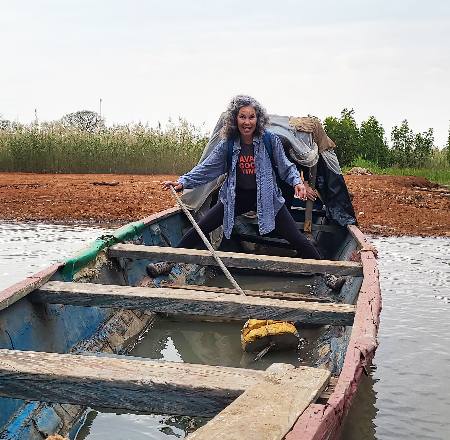

Traveling into the various bolongs, we saw monitors, crocodiles, mudskippers, and a seemingly endless variety of birds. In addition, we interacted with local fishermen and crabbers (mostly women reaching into the mangroves from dugout canoes).
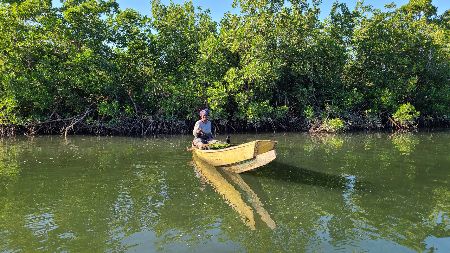

4. Food
Identifying stores with no signage was challenging, but if we asked the locals to direct us, we typically found what we sought (mosquito coils, data cards). Fresh fruits and vegetables were available in markets that we traveled long distances inland to get to. Ground nuts (peanuts), fish, eggs, and tapalapa bread were available in many shore-side villages.
We dined at three restaurants during our three-week visit and shared four meals in people’s homes. We were happy to contribute to each family’s rice fund in exchange for their generosity. We paid cash for all food items. Often the seller would negotiate a price if we purchased several items without us asking. In comparison to the EU, we found all of the food in The Gambia extremely affordable.
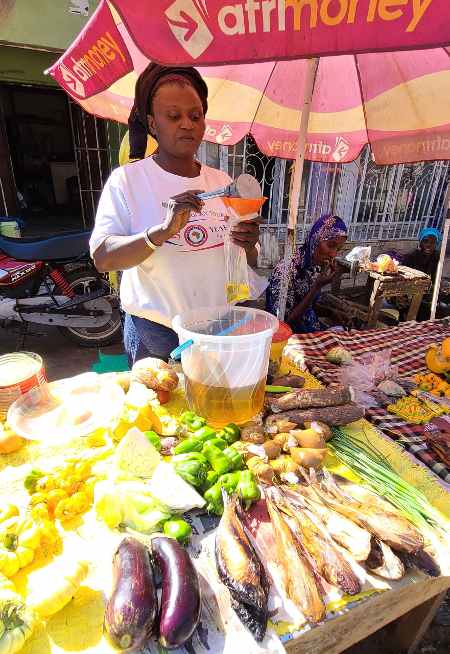
5. Water
Making water in the muddy river is possible. We used our EcoTec watermaker twice. We had to change the pre-filters frequently, and as the water turned fresh further upriver, we had to reduce the pressure so we didn’t exceed the rated flow rate of the membranes.
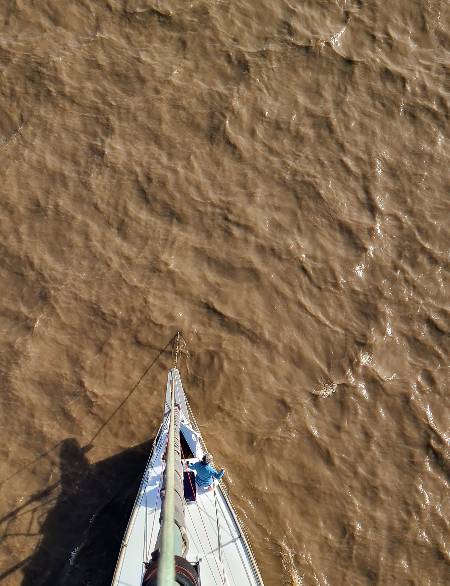

6. Fuel
Fuel can only be accessed via a pre-arranged fuel truck or by walking with your jerry cans from a gas station near the check-in dock in Banjul. It was more convenient for us to fuel up in The Canaries and again when we reached Cape Verde.
7. Dress
Over 95% of Gambians are Muslim. So, out of respect, we dressed conservatively throughout our stay. Protection from the scorching sun was an added benefit of lightweight, full-coverage clothing. We had our laundry done by our host’s sister in Bintang Bolong.
A note on poverty:
The Gambia is a poor country, with 40 to 50% of people living in multidimensional poverty, according to The United Nations Development Program (2023). There is a fledgling tourist industry there that could use more traction.
Hence, I was motivated to spread the word by writing this article. We were compelled to bring items that we established beforehand were needed, but simply cruising The Gambia and paying for goods and services during your stay would benefit the economy.
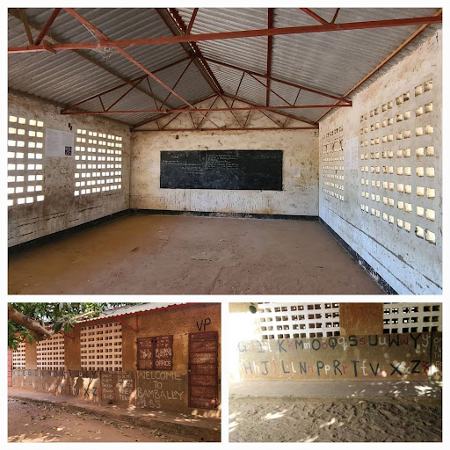

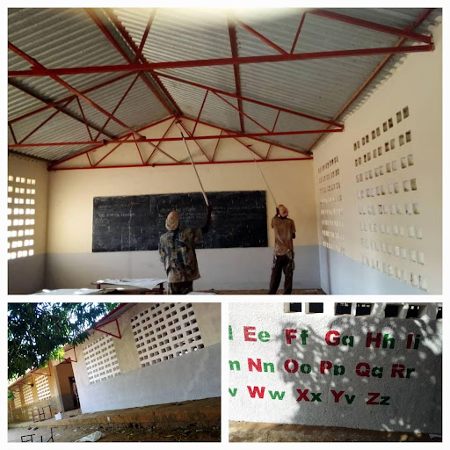

Once there, if you want to sponsor a project, you can. We organized sponsorship for painting at a local school and were pleased with the outcome. Suffice it to say that a little goes a long way in The Gambia.
Jill Gallin
SV Gerty of New York
SVGerty.com
…………………………………
About the author
Jill Gallin is sailing the world with her husband, Michael. They left New York in June 2020 and traveled to The Gambia via the Mediterranean Sea on Gerty, their Allures 45.9.
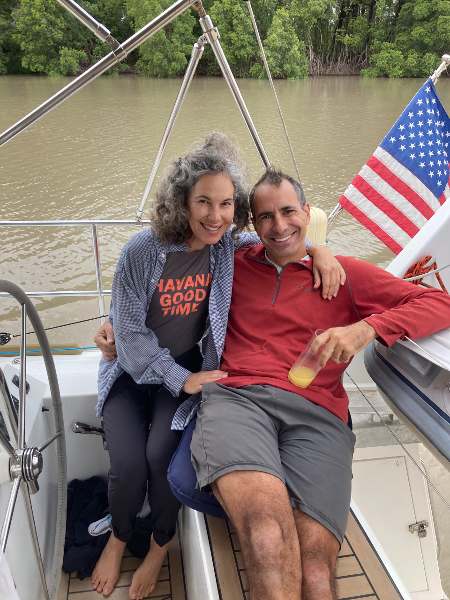
Jill and Michael love to take “the road less traveled” and build meaningful relationships with the people they meet. Jill is a Pediatric Nurse Practitioner. Hence her strong interest in healthcare. Jill and Michael have two sons, Zachary and Joshua. Zachary joined them on their Gambian adventure.
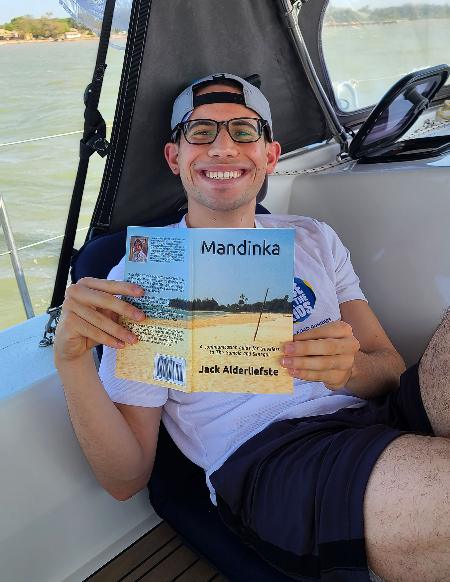

Links to Jill Gallin’s Blogs about The Gambia
…………………………………
Noonsite Reports on The Gambia
- The Gambia: A Great Place for Sailors (Noonsite January 2022)
- Gambia: Skirting the COVID Chaos (Noonsite February 2021)
- Other Gambia Reports
…………………………………
The opinions expressed in this article are the author’s own and do not reflect the view of Noonsite.com or World Cruising.
…………………………………
Find out all news, reports, links and comments posted on Noonsite, plus cruising information from around the world, by subscribing to our FREE monthly newsletter. Go to https://www.noonsite.com/newsletter/.
Related to the following Cruising Resources: Atlantic Crossing, Atlantic Ocean East, Circumnavigation, Off the Beaten Path, Routing



